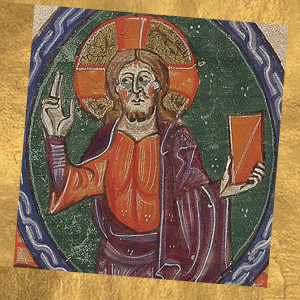Saint Malo

Bishop in Brittany
He was a bishop, but he did not hold office: some disputes led him to abandon his flock and resign his bishopric. He went to Aquitaine and at Saintonge he completed his earthly pilgrimage. Malo had studied in Wales in the monastic school of Llancarfan, which had been founded by Saint Cadoc, and remained there as a monk. According to tradition, once he became bishop Malo left Glamorgan together with some of his companions, took to the sea, and made a way stop on the island of the hermit, Aaron. On the advice of the hermit, the Welsh monks went to Aleth, a city of the ancient lands of the Coriosolites.
Fleeing Persecution
As persecution fell upon the inhabitants of Aleth, Malo went on his way to find shelter in Saintonge. He returned from exile at the request of the inhabitants of Aleth, who were devastated by plague and famine. After the plague passed, Malo returned to Saintonge, where he died on November 16, 649. THe Christians of Aleth managed to recover some of his relics. During the Norman invasions on the coasts of Brittany, Malo’s relics were kept in Île-de-France, more precisely in Saint-Jacques du Haut-Pas, Paris.
The churches that bear its name
The church of Saint Malo in Bully, in the diocese of Arras, owes its name to Malo. His bust, with the vestments of a bishop, a false oaken reliquary (which dates to the eighteenth century), is in the choir. In the Paris region, the cathedral of Pontoise is dedicated to him.







